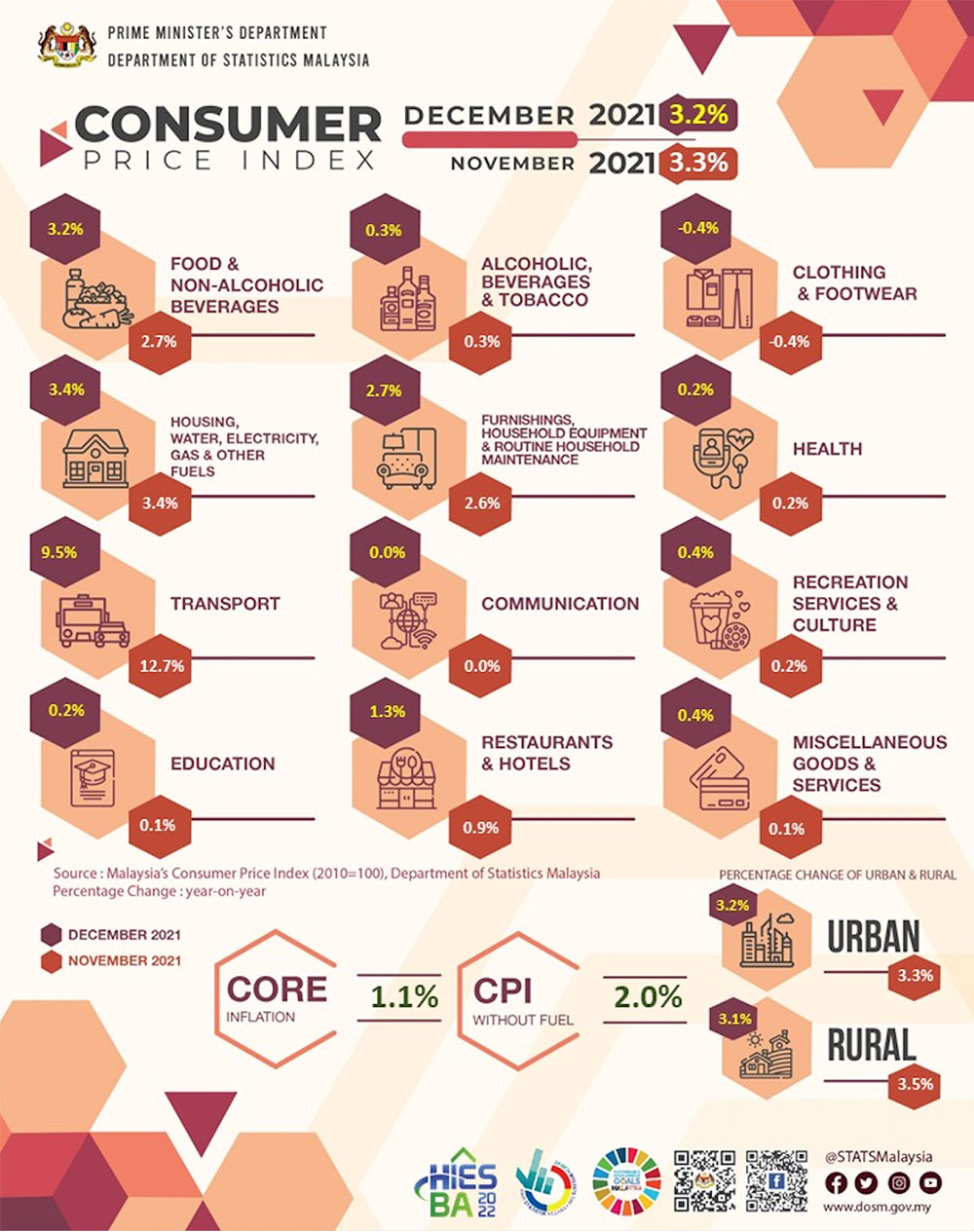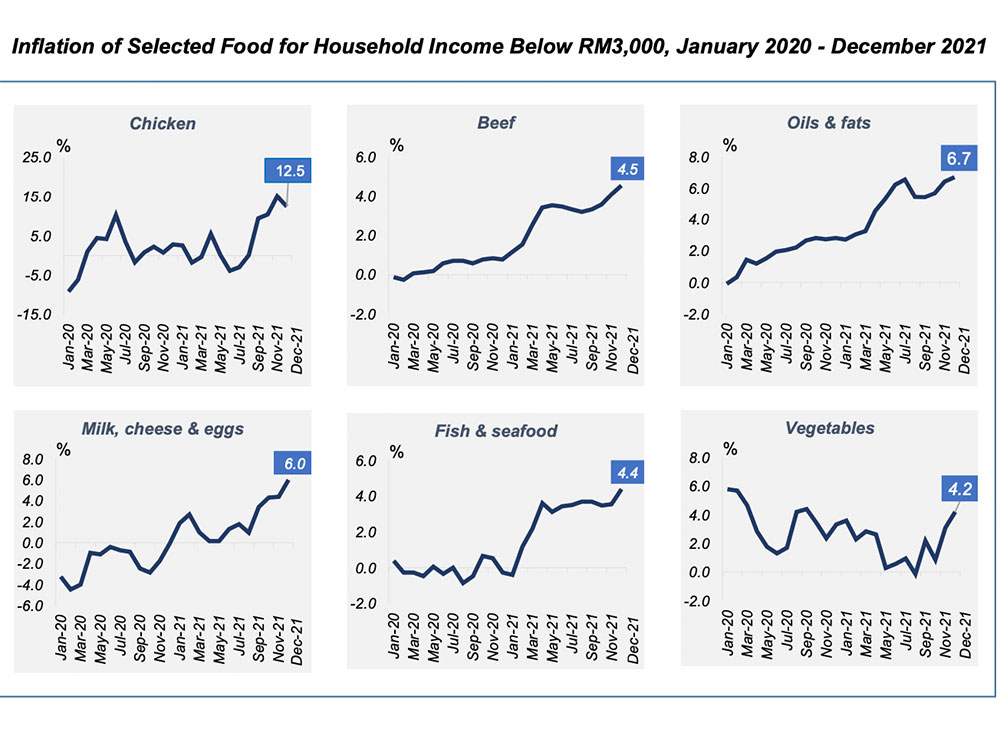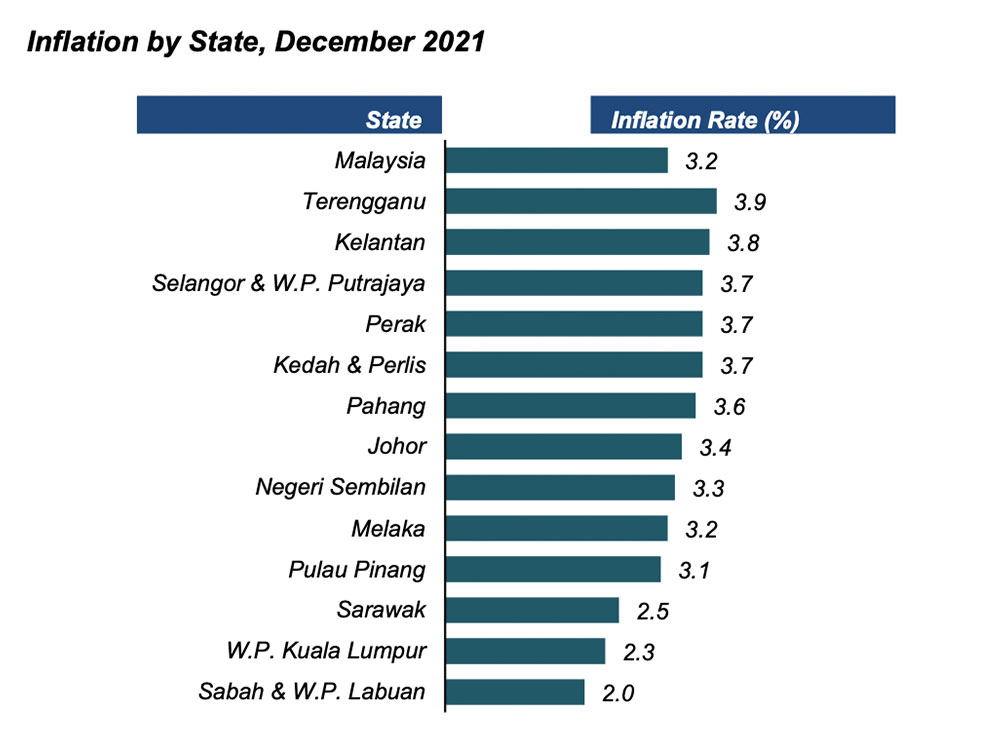Annual inflation rose 2.5 percent last year, a marked increase from the 1.2 percent deflation experienced in 2020.
According to the Statistics Department, the consumer price index (CPI) for Dec 2021 also shot up 3.2 percent when compared to the same month in 2020.
This increase surpassed the average monthly CPI inflation rate over the past decade (2011-2021) of 1.9 percent.
Chief statistician Mohd Uzir Mahidin explained that the CPI rise was partly driven by higher prices for food and non-alcoholic beverages.
This, in turn, was caused by the flood crisis experienced in many parts of the country.
“Heavy rains that occurred in several states such as Selangor, Kelantan, Terengganu, Pahang and Johor throughout Dec 2021, following the transition of the northeast monsoon has led to the increase in food prices, especially vegetables, and fish and seafood.
“The increase is attributed to a direct effect of supply shortages due to the weather factor.
“Continuous heavy rains that resulted in floods as well as landslides that occurred in vegetable producing states such as Pahang also contributed to these price increases and directly contributed to the increase in national inflation.
“However, the implementation of Skim Harga Maksimum Keluarga Malaysia (SHMKM) announced by the government during Dec 7 to 31 has eased the inflation of this group from continuing to soar,” Uzir said in a statement today.
Some food rose double digits
The CPI for two items rose by double digits - chicken (13.6 percent) and eggs (13.5 percent) - when compared to a year prior.
“(Chicken) recorded an average price of RM9.54 per kilogram compared to RM8.40 in Dec 2020,” he said.
In fact, all food groups saw an increase in CPI: Meat (8.3 percent); milk, cheese and eggs (5.5 percent); vegetables (5 percent); oils and fats (4.4 percent); and fish and seafood (4.2 percent).

Poor most affected
Uzir said that the increase in the price of food and non-alcoholic beverages was more deeply felt by households earning under RM3,000 per month.
Compared to the general population, this income group experienced a higher CPI for oils and fats (6.7 percent); milk, cheese and eggs (6 percent); and fish and seafood (4.4 percent).
They also experienced higher CPI for transport as well as for housing, water, electricity, gas and other fuels compared to the general population.
“This discontinuation of electricity discounts under the Pemulih package, which ended in Sep 2021, had an impact on the inflation for the group (with) income below RM3,000,” said the chief statistician.

All states also saw an increase in CPI.
Eight state groups, in particular, experienced an incline that surpassed the national inflation rate (3.2 per cent).
The eight are - Terengganu (3.9 percent); Kelantan (3.8 percent); Selangor and Kuala Lumpur (3.7 percent); Perak (3.7 percent); Kedah and Perlis (3.7 percent); Pahang (3.6 percent); Johor (3.4 percent); and Negeri Sembilan (3.3 percent).

Fuel factor
Among the contributing factors that led to the rise in the annual inflation rate to 2.5 percent was the rise in chicken, cooking oil and vegetable prices.
The government’s move to discontinue electricity bill discounts also led to the incline.
The main reason, however, was the ceiling price for fuel.
“The setting of the RON95 ceiling price by the government starting Mar 2021 at RM2.05 was the main contributor to the increase of the inflation rate,” said Uzir.
He added that inflation was not unique to Malaysia but experienced in countries like the United States (7 percent from Jan 2020 to Dec 2021) and the Eurozone (5 percent from Jan 2020 to Dec 2021).
- Mkini




No comments:
Post a Comment
Note: Only a member of this blog may post a comment.